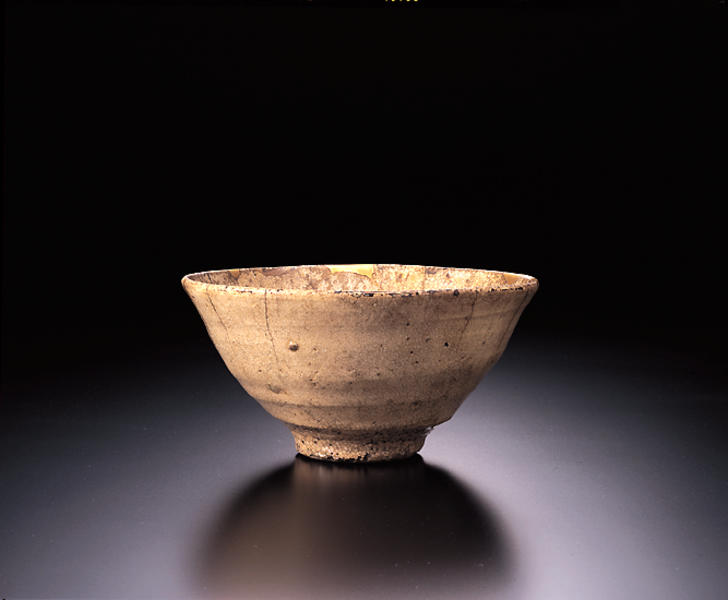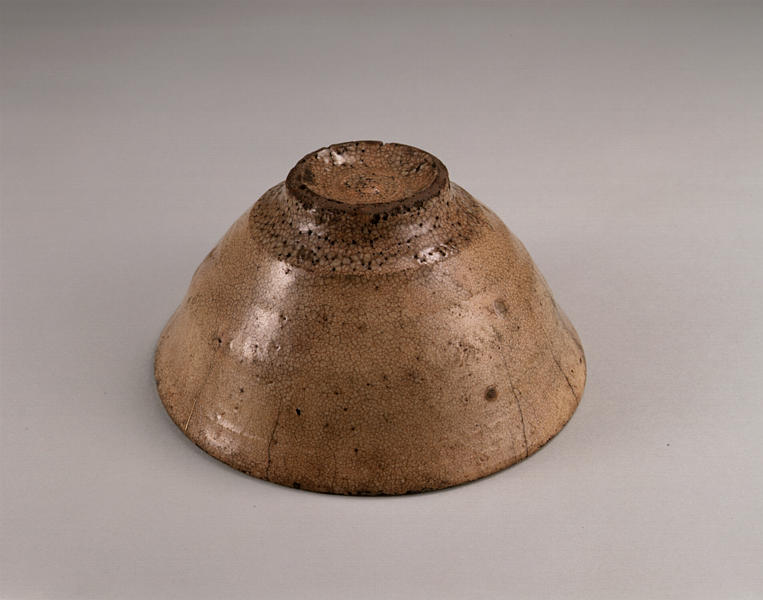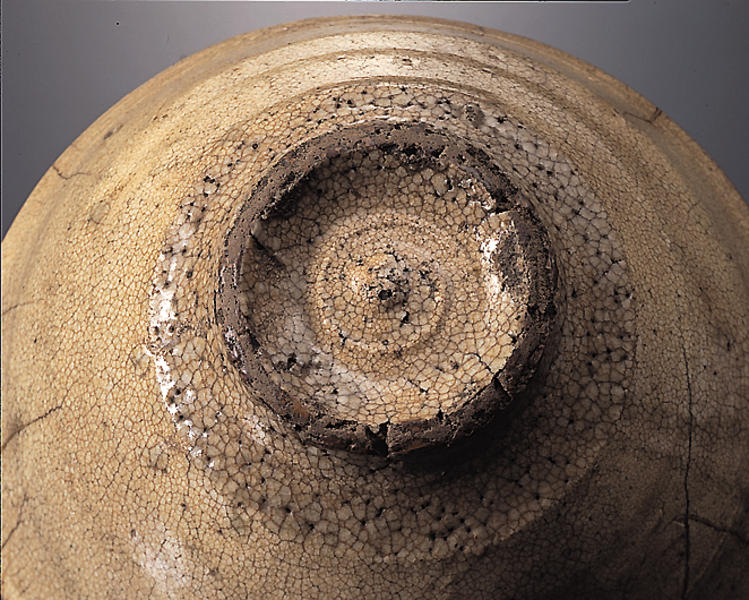井戸茶碗 銘 金森
- 朝鮮王朝時代
- 16c
- 高麗井戸茶碗
- H-7.4 D-15
- 所蔵
- 金森宗和、蜂須賀家、近藤滋弥旧蔵
朝鮮王朝時代 16世紀
高:7.4cm 口径:15.0cm 高台径:5.2cm
井戸茶碗は作行きの違いによって,大井戸,青井戸,小井戸,小貫入の四種に分けられているが,言うまでもなく焼かれた窯は同じであり,また焼造年代もほぼ同時期である。井戸茶碗はすでに桃山時代天正年間からその名称が使われており,当時を代表する茶人や武士が所持していたらしく,以来わび茶の茶碗の最高峰に位置づけられてきた。
この「金森」と呼ばれる井戸茶碗に関しては伝来など詳しくは不明であるが,あるいは金森出雲守所持の茶碗であったのであろうか。口が開き,見込みのやや浅い器形は小井戸の特徴とされるところである。しかし,作行きは大らかで力強い。広い見込みの中央には茶溜りがつけられて味わい深い風情をなし,そのまわりに目跡が五つほど残っている。また,高台は低く,高台内の削りは丁寧で,かすかに渦兜巾が見られる。釉はかなりよく溶けて細かい貫入が生じ,高台まわりには細かな梅華皮が現れるなど,見どころの多い茶碗である。 (赤沼)
金森宗和(かなもりそうわ)
江戸時代初期の茶匠。飛騨高山城主金森可重(かなもりありしげ。よししげとも)の子で、名を重近(しげちか)。父に勘当されて京都に出、茶の道に入りました。公家を中心に茶湯を広め、その茶風は「綺麗さび」を旨とし、姫宗和と呼ばれました。野々村仁清を指導し、宗和の美意識がそこに集約されているといえます。
仁清白釉円孔透鉢
Catalogue Entry
Korea, Yi dynasty, 16th century
Korean Ido ware
Height, 7.4cm; mouth diameter, 15.0cm;
foot diameter, 5.2cm
Ido-type tea bowls vary in their handling and are divided on these formal differences into 4 types: O-Ido, Ao-Ido, Ko-Ido, and Ko-kan'nyu. Needless to say, these works were all produced in the same kilns and were all produced in generally the same time frame. The name "Ido jawan" or Ido-shaped tea bowl was already in use by the Tensho era (1573-91) of the Momoyama period, and it seems that the major tea masters and samurai of the day owned these bowls which would eventually be placed in the highest ranks of tea bowls for the wabi style of tea.
While the details of the provenance of the Ido tea bowl known as Kanamori are unknown, it may have been given this name because it was once the property of Kanamori Izumo-no-kami. This bowl has a wide mouth and a relatively shallow interior and thus falls into the Ko-Ido category. The overall handling is, however, expansive and powerful. The center of the broad interior of the bowl has a small reserve for the pooling of the tea, and this detailing gives further interest to this bowl's appearance. 5 rings tracing the potter's actions at the potter's wheel circle this pooling reserve. The foot is low, and the carving within the foot is precise, with a very slight, swirling central tokin foot knob. The glaze is quite well applied and has a fine crackling, and the area around the foot shows fine glaze pulling. These details all provide this bowl with a rich array of interesting visual effects. TA


